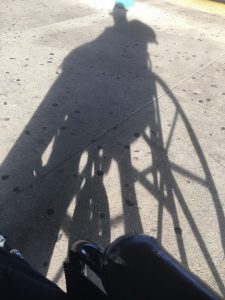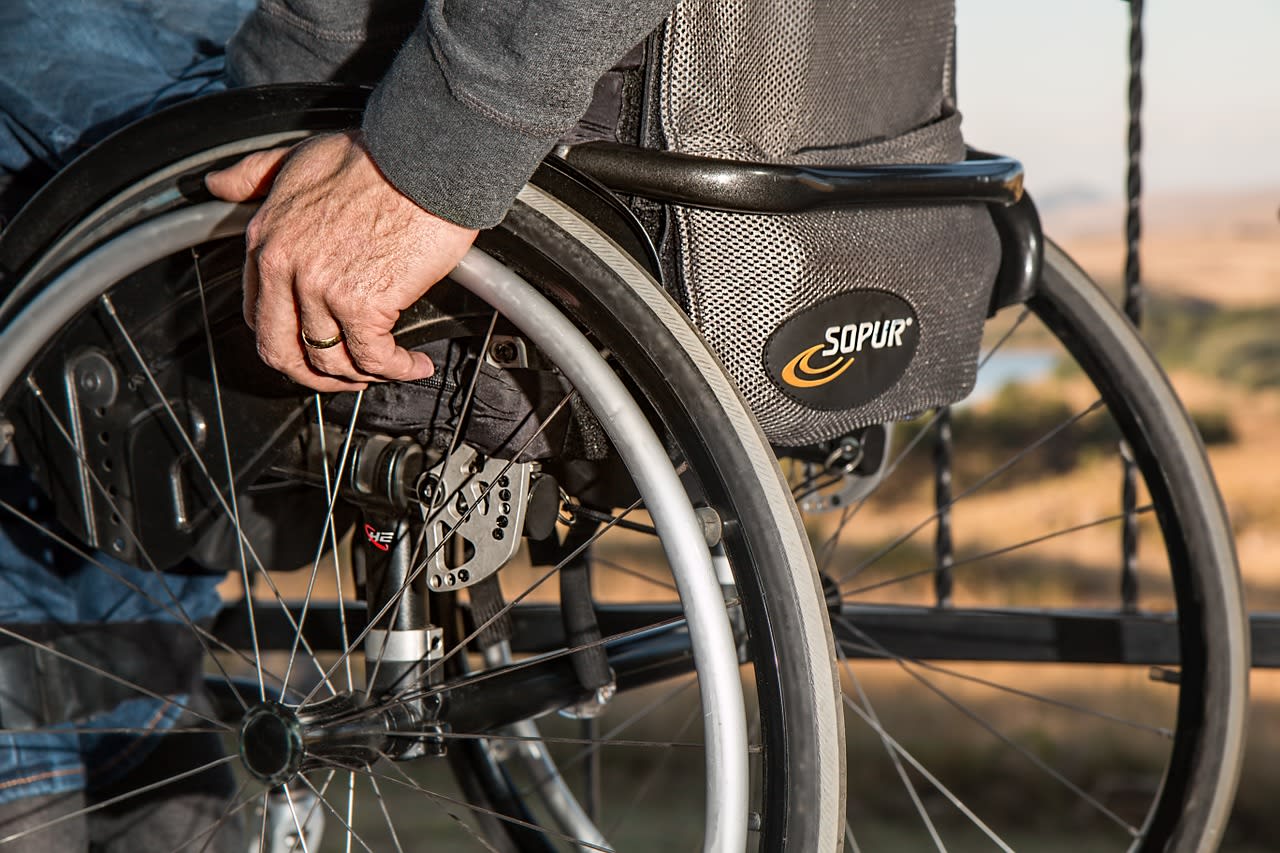
As I write this, I am recuperating from spine surgery. I found this experience to be very enlightening so it’s going to inform the content of my writing over the next few weeks.
Long story short, I threw my back out in March. When it didn’t bounce back, I went to a doctor, who diagnosed that my back was “a mess.” Within a few weeks, I was walking with a cane. Shul eventually became too far to walk even with the cane, so my wife borrowed a wheelchair from Achiezer (great organization!) so that she could wheel me there. I had one week that was so bad, I could barely walk at all. I went into the office twice that week, both times in the wheelchair. And I learned a lot.
Before I begin, allow me to make it clear that I do not presume to speak for regular members of the disabilities community, whose experiences I am confident are very different from my own. I am only sharing the peek behind the curtain that I experienced.
Right off the bat, I discovered (a) that wheeling yourself in a wheelchair takes mad upper-body strength and (b) you’re going to want to wear gloves. But that’s not what I want to talk about. I want to focus on how the world is not quite as accessible as we like to think it is. (The following indented paragraphs comprise an account I call “Jack vs. the MTA.” If you don’t care to read a play-by-play of my commuting nightmare, feel free to skim, scan or scroll.)
I live near a subway station with an elevator, I work near a subway station with an elevator, and I change trains at a subway station with an elevator. Nothing could be easier, right? Ha!
First of all, aside from the gap between the platform and the train, there’s also a height difference: the train floor is about an inch higher than the platform. The tiny front wheels of a wheelchair do not happily make this transition. Perhaps skilled wheelchair pilots can clear this easily (by popping a wheelie?) but I had to get out of the chair and push it on – an option not open to everyone! I subsequently learned to push up with my feet – still difficult and still not something everyone could necessarily do.
At Fulton St. station, I was the victim of poor signage. Apparently, there are multiple elevators for all the different subway lines. I finally found the right one (third time’s the charm!) but it added considerable time to my commute.
I arrived at the station near my office and – oh, joy! The elevator was out of service! Happily, there is also an escalator, so once again, I got out of the chair and pushed it onto the escalator. (Had there only been stairs, I would have had a much bigger problem.)
I wheeled to the corner to cross the street at the cut curb. Getting down was fine but the cut curb on the other side of the street was too difficult to wheel myself up. (I had to assist with my feet.) The building where I work has a wheelchair accessible entrance. I swiped my ID but if the doors were supposed to open automatically, they didn’t. (A passerby opened it for me.) I made it to my floor and punched in; the door unlocked but, again, I was unable to open the door without getting out of the chair and pushing it through. (I like to arrive early so there was no one around to assist me.) By the time I went home, the elevator had been repaired, which was good because the escalator I had taken earlier only goes up.
The next time I went in, I was better prepared but I encountered new challenges. For example, there was construction on the intersection where I crossed. I wheeled myself to the next intersection and… no cut curb. (Sigh.)
Things were pretty uneventful until after work, when I went to run an errand on West 8 St. I took the train to West 4 St., which has an elevator. The ramp from the train platform to the elevator, however, was incredibly steep. It was all I could do to give myself one push, rest, one push, rest…. While this laborious process was underway, pedestrians were speed-walking past me. I was almost at the top when a woman offered assistance, which I gladly accepted.
Then I discovered that, not only can sidewalks be inclined, they can also list to one side, with the result that it’s extremely difficult not to veer off into the street. And – more joy! – the crosswalks are humps! You might not even notice it when walking but it’s painfully obvious when you have to wheel yourself over them.
I reached my destination, which of course had stairs. I called to tell the proprietor I had arrived so that he could bring me my package and… their phone wasn’t working. I decided to wait until another customer came or went from the business and ask them to tell the owner that I was waiting outside. That took about 15 minutes, then it was navigate the crosswalk humps, try not to veer off the slanty sidewalks and get down that steep subway ramp without accelerating out of control. Fun!
I stayed off my feet for about a week and a half, which really helped, so the next time I went to work, I was back on my cane. This was really good because that very week the MTA started a construction project on my subway line. The detour entails taking a shuttle train and then changing platforms – down a flight of stairs, across, then up a flight of stairs – both going to work and returning home. Honestly, a person using a wheelchair would be in dire straits if they discovered this as suddenly as I did. If you can’t go down the stairs, cross over, and then go up the stairs, you can’t go forward and you can’t turn back. I have no idea how people using wheelchairs are going to commute on my subway line for two months!
So, what’s my point? I guess it’s that we take for granted that making things accessible somehow levels the playing field. I discovered the hard way that such is not the case. I’m not asking people to bombard the mayor with demands to level the crosswalks in the West Village; they’re probably that way for a reason (drainage?). But if your shul or business is doing a construction project, don’t just assume that the accommodations for people with disabilities are necessarily as accommodating as you think. If at all possible, ask people with disabilities for their input.
Finally, while my co-workers were very kind in offering assistance, strangers on the street were not so forthcoming. I get that. There’s a feeling that people want to be independent and no one wants to appear condescending by offering unnecessary assistance. But if someone is visibly struggling, as I was on that subway ramp, maybe don’t powerwalk past them. In such a case, offering assistance is clearly the right thing to do. It’s natural to want to help a friend but in discussing the obligation to help an enemy unload a struggling animal, the Talmud (Baba Metzia 32b) says that one must help an enemy first because doing so builds character. Similarly, let’s treat struggling strangers like we would friends. If you would offer assistance to a friend in a given situation, there’s no harm in offering it to strangers.
Strive to design and build things so that accommodations are truly accommodating. Become more aware of opportunities to advocate for inclusion. And, if you see someone who looks like they could use some assistance, don’t ignore them. That’s what I learned from my week in a wheelchair.
Learn more about how we can make our communities more inclusive
by visiting Yachad – The National Jewish Council for Disabilities
Rabbi Jack Abramowitz is Torah Content Editor at the Orthodox Union. He is the author of six books, including The Tzniyus Book and The Taryag Companion. His latest work, The God Book, is available from OU Press as well as on Amazon.
The words of this author reflect his/her own opinions and do not necessarily represent the official position of the Orthodox Union.

